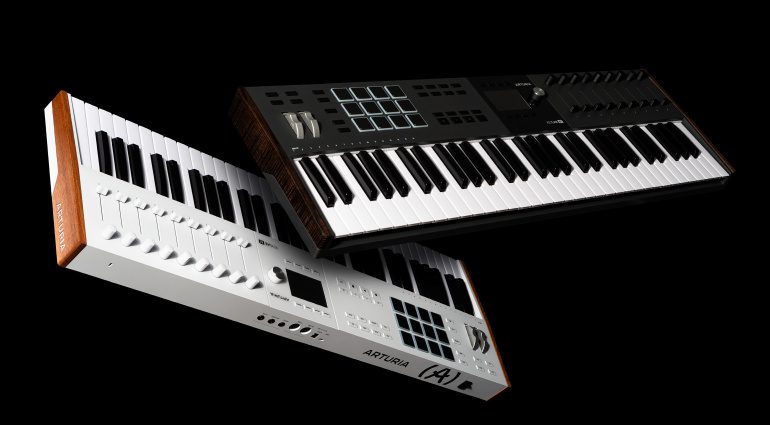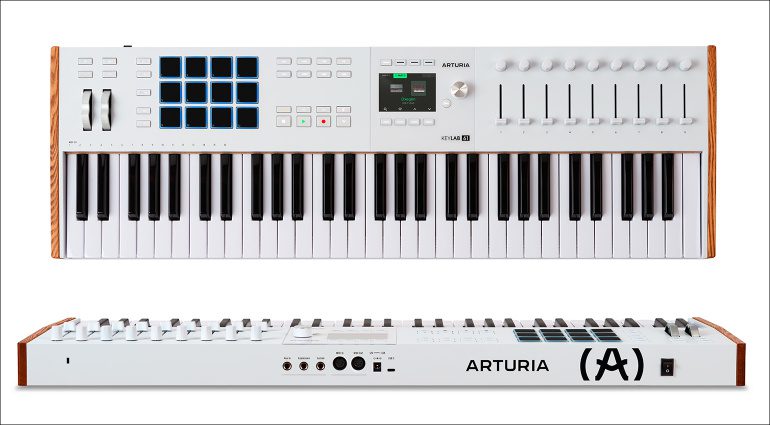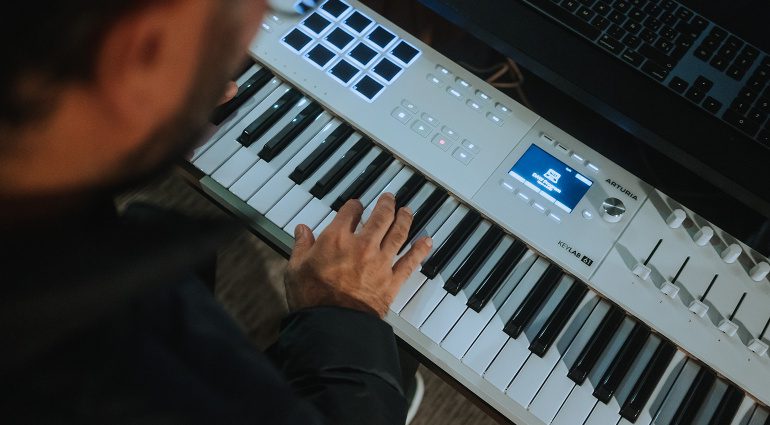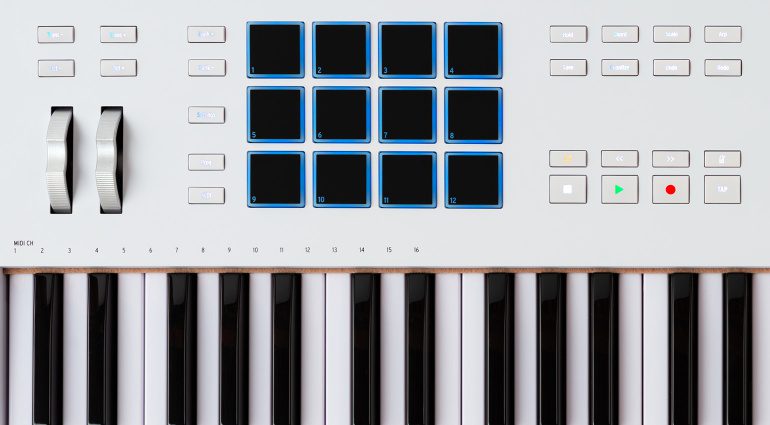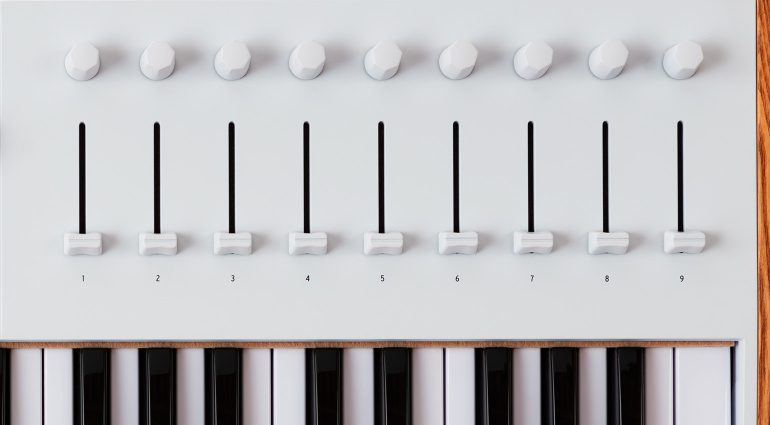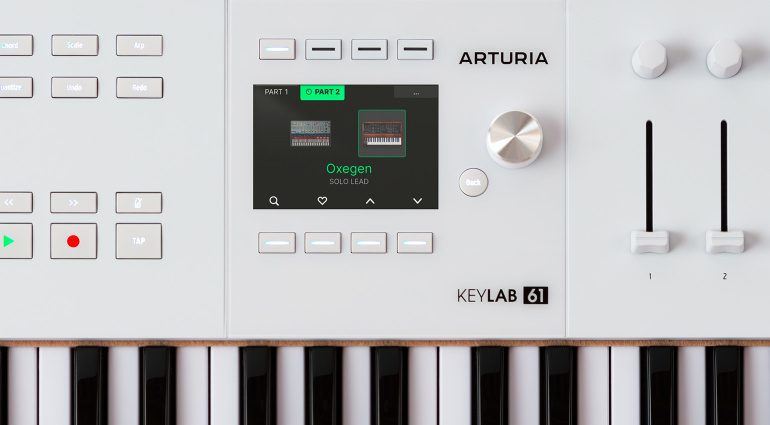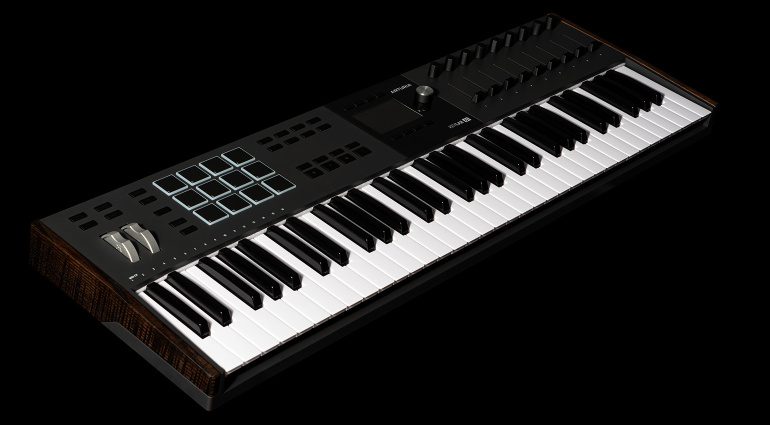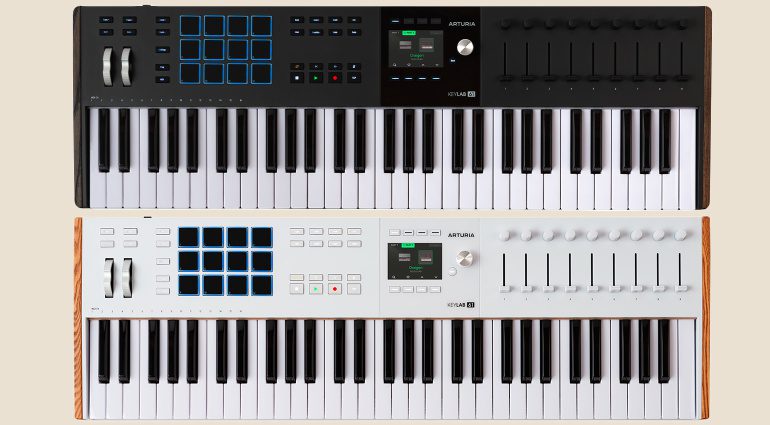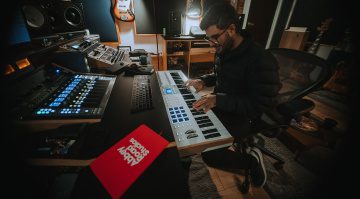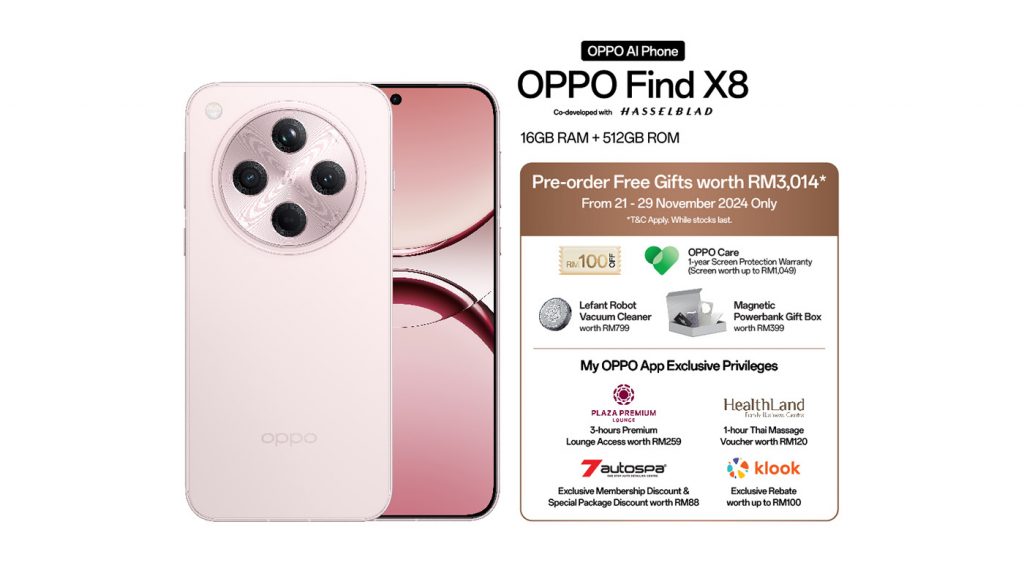Following the release of their updated Keylab Essentials, the flagship gets its long-awaited update in the form of the Arturia Keylab 61 Mk.3. Can this venerable controller still deliver?
But First, a Little History
I feel I need to deliver some back story to my experience with the Arturia Keylab range. I was an early adopter of the original Mk.1 Keylab, taking delivery of a Keylab 61 way back in December of 2013. I recall my excitement at the prospect of having a dedicated controller for V Collection.
However, very quickly, that excitement turned to frustration as numerous issues began to appear. There were difficulties getting the keyboard to connect to my Mac over USB. The MIDI Control Center wouldn’t recognise it and when it did connect, I’d sometimes see multiple instances of it in the Mac’s MIDI Studio.
Eventually, the software got updated and things began to become more pleasant. That was until my first key broke. I walked into my studio one morning to find one of the keys sitting at a jaunty angle high above the others. The key return stop had somehow snapped off and I had no idea why.
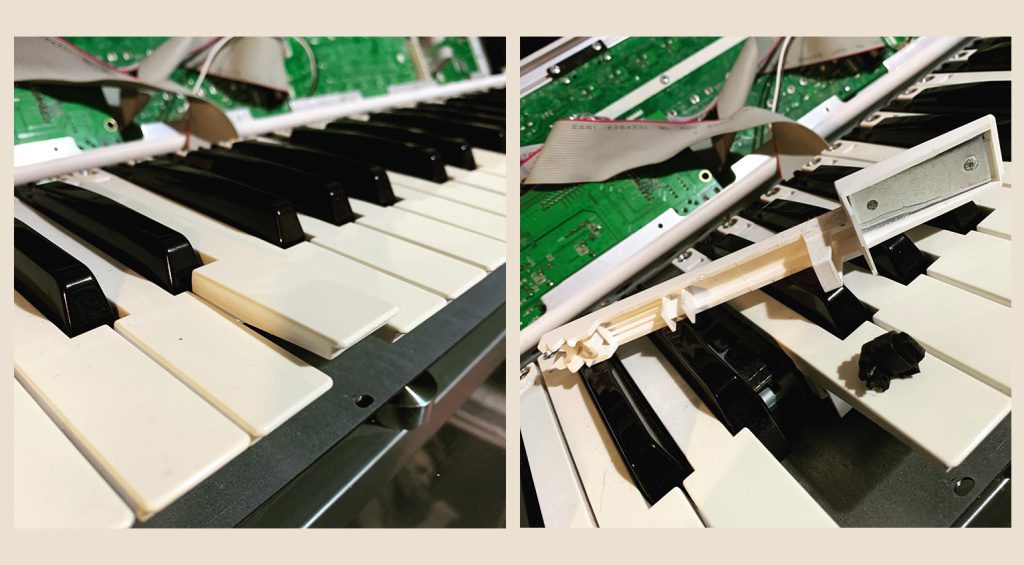
I opened the Keylab up and found the broken part. Luckily, the break was clean and so a dab of Super Glue had it back in place. The white keys had always caused me some concern. They seemed far too thin and flexed under very little pressure. And then another key went.
And another. I think, so far, I’ve had over a dozen keys break in the same way as the first and none of them doing so whilst playing. Each has been repaired and it wasn’t until it was far too late that I heard that Arturia had acknowledged the issue and offered replacement keyboard mechanisms that were better by design.
So you will forgive my trepidation when it comes to Arturia Keylab controllers. That said, absolutely everything else I have of theirs has been exemplary. So when Arturia sent me the Mk.3 Keylab 61, I felt pretty confident that they’d improved somewhat. But I can’t lie and say I was completely confident.

The Arturia Keylab 61 Mk.3
The Mk.3 Keylab 61 is a lovely-looking thing. It’s slim, sleek and has lovely beech wood end cheeks. The styling of these is similar to the design we’ve seen on their flagship PolyBrutes, with its sculpted cutouts. The right-hand end has that classy embedded logo in there too. The unit has heft. Enough to imbue quality, not too much to make it uncomfortable to travel with.
Looking at the user interface, it feels less cluttered and the most obvious reason for this is the removal of one row of pads. In fact, this was one of the first things I noticed about it and could almost hear the cries of anguish from future customers. But I’m guessing that the majority of Arturia Keylab users aren’t using the pads, MPC-style.
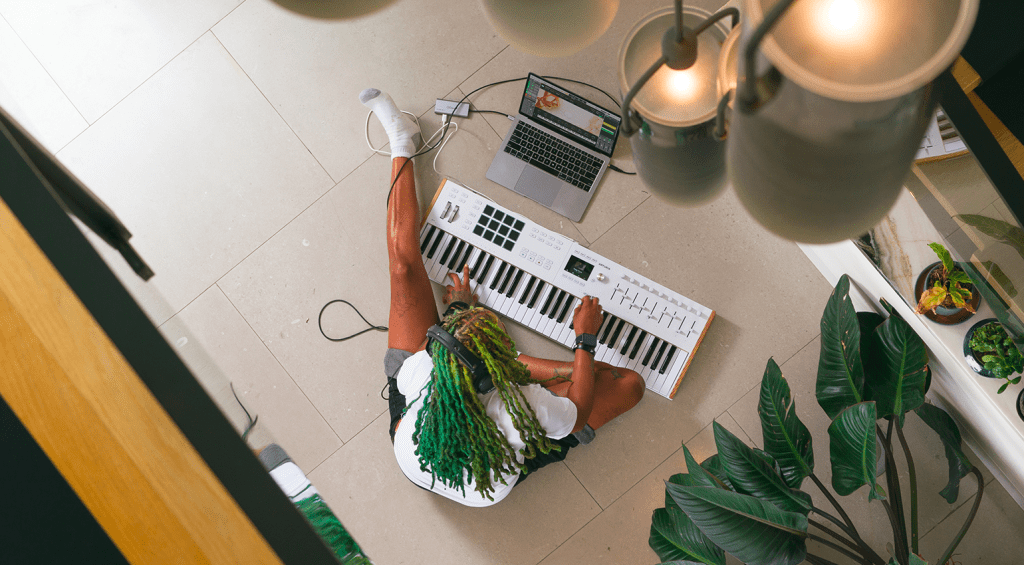
Less Pads, More Pads
What Arturia have done is remove four pads but add four banks. So you actually have 48 pads, in a manner of speaking. As well as being velocity and pressure sensitive, these pads will also work very well with clip-based DAW’s like Ableton Live. You clip grid can be represented on these pads so you can trigger clips with confidence!
On the other side of the user interface are nine faders and nine 360º potentiometers. Drawbar enthusiasts will be comforted that these remain. But there’s something new here too. Each of those faders and pots is touch-sensitive. This is a particularly cool feature of the new Mk.3 Keylabs.
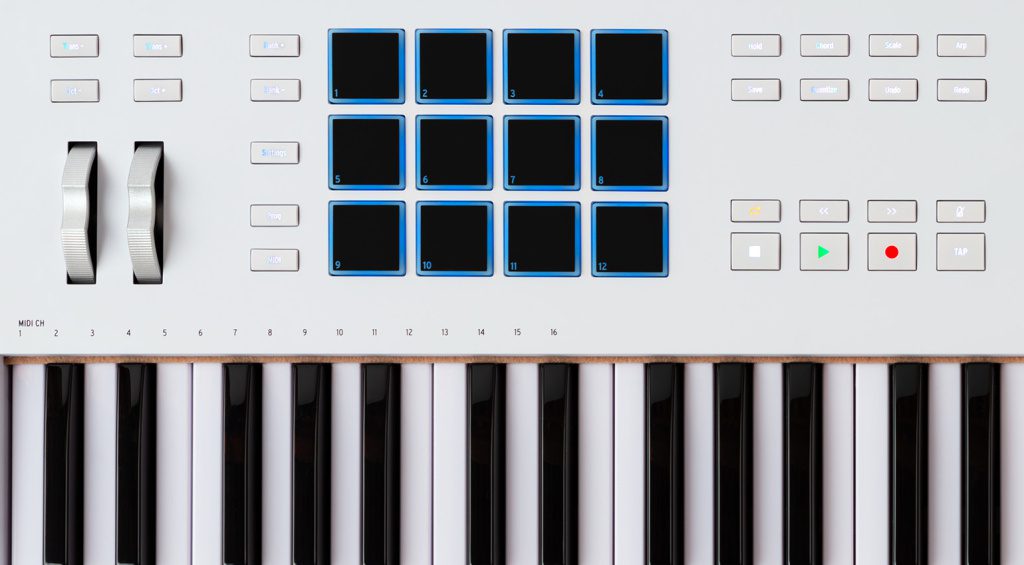
I Can Feel it in Your Touch
How often have you been flicking through presets and forgotten which parameters are assigned to which pot or fader? The only way to find out would be to wiggle each until you found the one you were looking for, ruining your flow and potentially your patch. Well, not anymore!
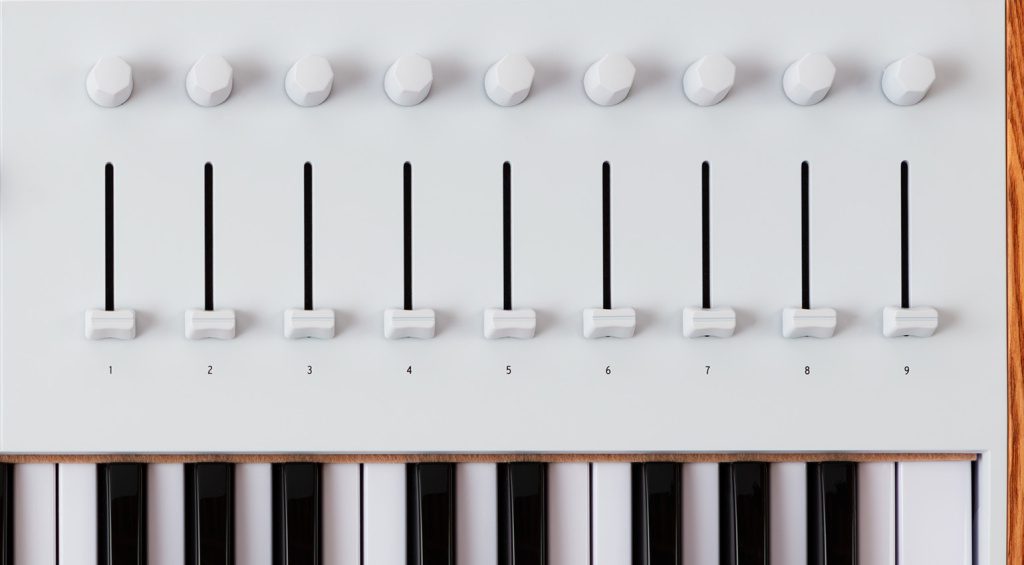
Simply touching the fader cap or pot surface reveals its assignment on the large LCD screen. As soon as your fingertip makes contact, the screen tells you what control you have and its specific setting. Very cool and a feature that does away with the need for digital scribble strips or, even worse, manual ones made of masking tape and a sharpie!
Arturia. The New Kings of Keys?
So, as you may recall, at the top of the page I mentioned my shocking experience with the original Arturia Keylab’s keyboard mechanism. Well, I know that got rectified some years ago. But they’ve gone even further with the Mk.3. Arturia seems to have gone all out on keyboard mechanisms recently.
The PolyBrute 12‘s amazing and revolutionary FullTouch is nothing short of inspiring and the lovely keybed on the Astrolab is solid yet eminently playable. And now it’s the turn of the Keylab to get an upgrade. The mechanism on the Mk.3 is really lovely. It’s smooth with just the right amount of bounce and resistance and the keys feel solid when dug into.
It also has the same beige felting as the Astrolab to prevent clacking and it’s one of the nicest controller keybeds I’ve played thus far. My only gripe? Yes, you guessed it. No polyphonic aftertouch. It’s great that we point this out these days, but with KORG delivering it in their new Keystage controllers, I thought it might have prompted Arturia to follow suit.
I don’t think we’re going to see the FullTouch mechanism in a controller for the forseeable future because that’s still a fresh concept and big draw for the PolyBrute 12. However, just a regular polyAT keybed would have been a nice touch. Maybe they’ll do a Yamaha and put one in the 88 key version that isn’t announced today but will inevitably come, possibly in early 2025?

It’s Always Better On The Big Screen
And let’s talk about that screen. A full colour, 480×320 pixel affair, 3.5″ across, diagonally, surrounded by eight contextual buttons and a large, notched rotary for scrolling through settings accurately. The screen dynamically adapts to whatever you are doing on your computer. This goes for your DAW as well as the ‘to-be-expected’ deep integration with V Collection instruments.
Those instruments are now displayed with full colour thumbnails so it’s really easy to see what you’re working with. The Keylab will always display details on its screen that mirror what you’re doing on your computer. When you flick between your DAW or a V Collection plugin, your Keylab screen follows.
The creative tools don’t stop there. The Arturia Keylab Mk.3 has a built-in scale mode, as well as an arpeggiator and chord play function. And all of its features are customisable from within the Keylab itself, such as pad colours, velocity curves, custom MIDI messaging and more.
Integration and Connectivity
Browsing through V Collection plugins is a real breeze. Just like the software, you can filter by favourites, genre, type or instrument. The DAW controls aren’t just limited to transport. Undo, Redo, Save and Quantize all have their own buttons so your hands spend more time on the keyboard than your mouse or trackpad.
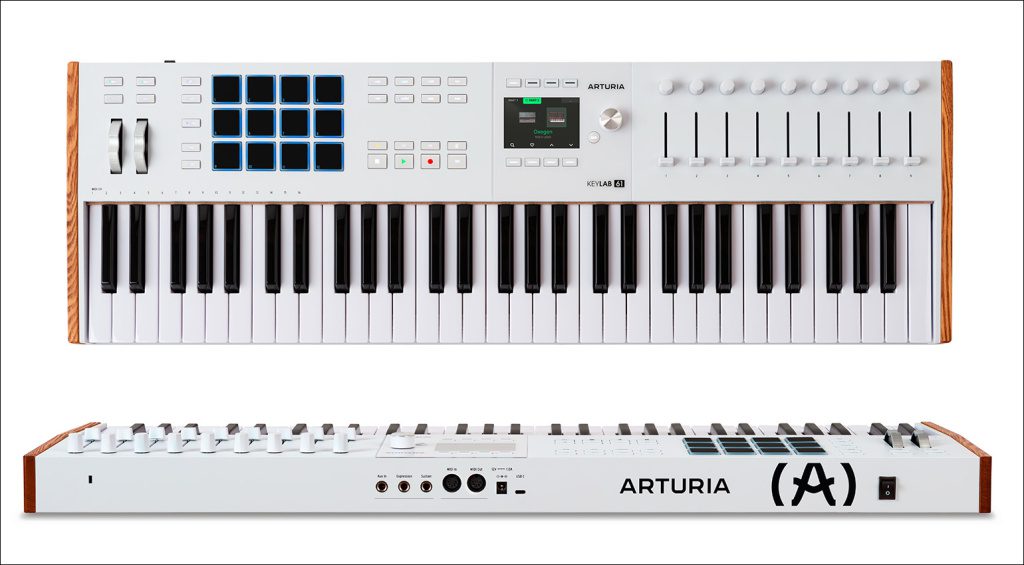
The connectivity at the rear is neatly kept in the centre and delivers a single USB-C socket, power supply input, 5-pin MIDI In and Out and three pedal control jacks. For the security conscious, there’s the obligatory Kensington lock socket. The entire unit can be bus powered via USB but the barrel socket for power may give you more confidence and will obviously reduce USB bus power draw on things like laptops.
As is the way with controllers, you get a nice little package of freebies which include Analog Lab Pro, Mini V, Piano V and Augmented Strings from the V Collection and the lovely Rev PLATE-140 from their FX Collection. There’s a copy of Ableton Lite and Native Instrument’s ‘The Gentleman’ piano instrument plus a couple of trial subscriptions to Loopcloud and Melodics, the music tutoring service.
Conclusion
After the range’s initial teething problems some twelve or more years ago, it is obvious that Arturia has come a long way with its controllers. They have built a solid reputation as being both sturdy and empowering in the studio and on stage. The Arturia Keylab Mk.III continues and advances all of that in equal measure.
They have now nailed a really good keyboard mechanism and delivered excellent feedback via the large screen and touch-sensitive controllers, the latter of which really impressed me when using it. Every bit of the Mk.3 oozes class, style and great functionality. It looks the part and can certainly walk the walk and talk the talk.
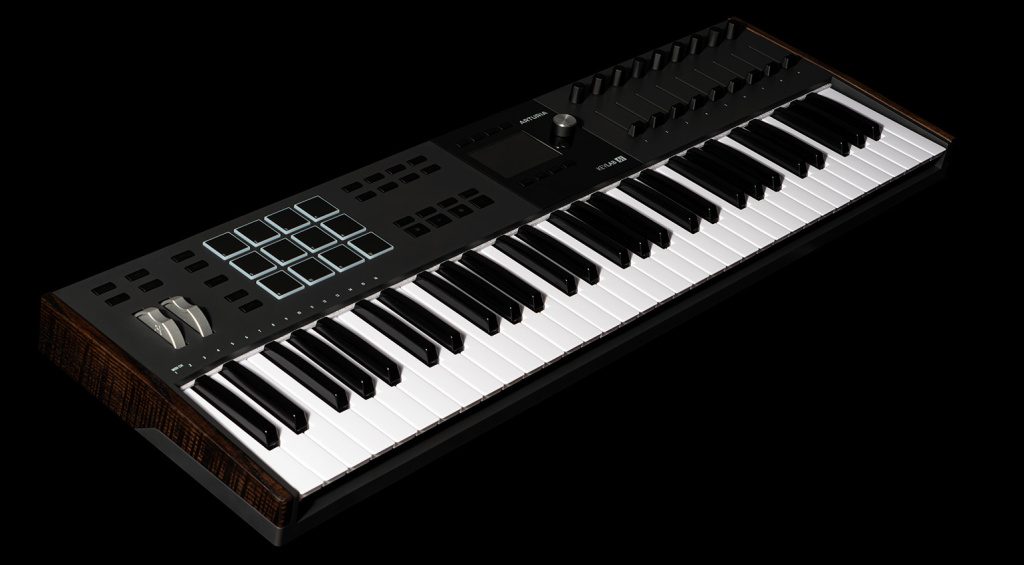
My need for a controller isn’t as strong as it used to be as I’m definitely 60/40 when it comes to using hardware and software, and if I didn’t have an Astrolab, I might be using the Keylab Mk.3 as my main controller at my desk, especially for V Collection work. And don’t let the V Collection integration put you off if you’re not entrenched in that. Keylab works well with everything, including many DAWs (a set of templates for many popular DAWs are available at the Arturia website), but the obvious connection between their hardware and software will be a real draw.
At launch, the Arturia Keylab Mk.3 comes in two sizes (49 and 61 key) and two colours (White and Black). Both look classy and have identical features apart from the number of keys. As I mentioned previously, the chances are that an 88-note version is in the pipeline and will likely appear early in 2025 but we will have to wait and see. If these two versions are anything to go by, the range-topper will be something worth waiting for.
The Arturia Keylab 49 Mk.3 is available to order now in Black or White for €449.00.
The Arturia Keylab 61 Mk.3 is available to order now in Black or White for €549.00.
*Note: This article contains promotional links that help us fund our site. Don’t worry: the price for you always stays the same! If you buy something through these links, we will receive a small commission. Thank you for your support!


